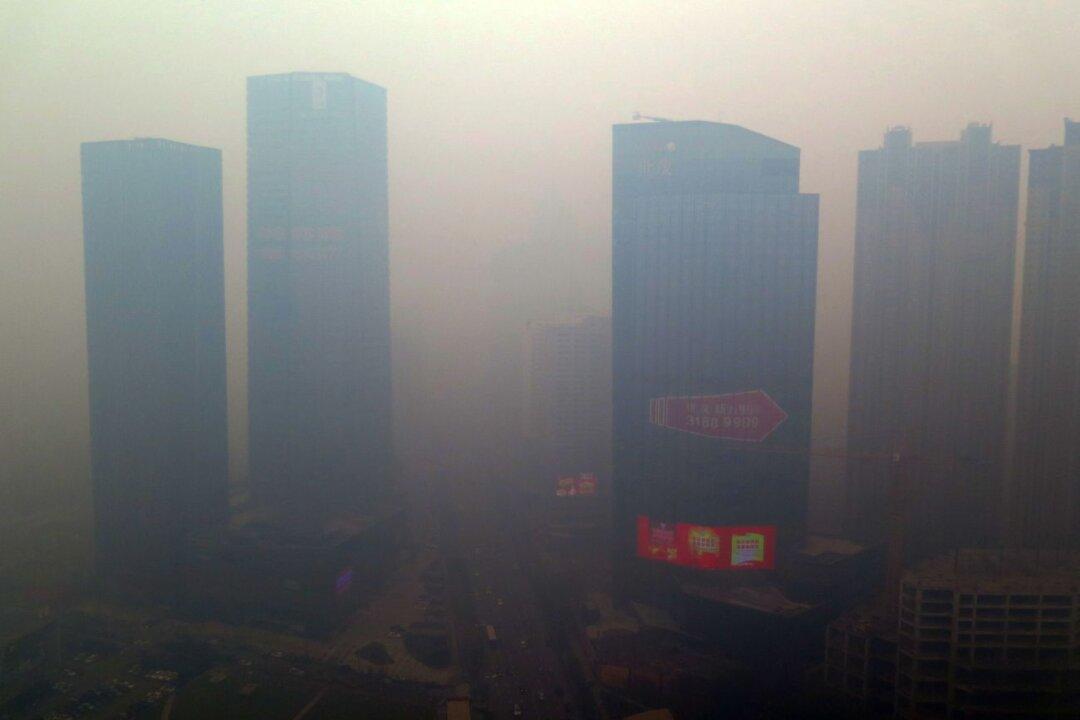
This picture taken on November 8, 2015 shows a residential block covered in smog in Changchun, northeast China's Jilin province. A swathe of China was blanketed with dangerous acrid smog on November 9 after levels of the most dangerous particulates reached around 50 times World Health Organization maximums, with energy use for heating blamed as winter sets in. STR/AFP/Getty Images





